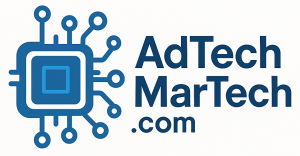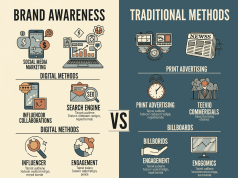In today’s digital landscape, programmatic advertising has revolutionized how businesses reach consumers. By automating the buying, selling, and placement of ads, programmatic advertising enhances efficiency and effectiveness. However, merely running programmatic ads does not guarantee success; to maximize return on investment (ROI), advertisers must adopt best practices. Here’s a comprehensive guide on how to optimize programmatic ad campaigns for superior results.
Understanding Programmatic Advertising
Before diving into best practices, it is crucial to understand what programmatic advertising entails. It involves using algorithms to buy and sell ad space in real time. Advertisers can target specific demographics, interests, and online behaviors, ensuring that their ads reach the right audience at the right time. This precision makes programmatic advertising a powerful tool for marketers looking to enhance their campaigns’ efficiency and ROI.
Best Practices for Maximizing ROI
1. Define Clear Campaign Objectives
Setting specific, measurable, achievable, relevant, and time-bound (SMART) objectives is fundamental. Are you aiming to increase brand awareness, generate leads, or drive conversions? Clear objectives help guide your campaign strategy, allowing for more effective targeting and measurement of success.
2. Utilize Data Analytics
Data is at the heart of programmatic advertising. Leverage advanced analytics to gain insights into audience behavior, ad performance, and market trends. Use these insights to refine targeting and optimize ad creative—ensuring that you are engaging your audience effectively.
3. Segment Your Audience
Audience segmentation allows for tailored messaging that resonates with different consumer groups. Use data to create segments based on demographics, interests, and behaviors. Personalized ads foster better engagement, ultimately leading to higher conversion rates and improved ROI.
4. Optimize Creative Assets
High-quality creative assets are essential for capturing user attention. Invest in creating engaging, visually appealing ads that communicate your message effectively. A/B testing different ad variations can also help identify which creatives resonate most with your audience, enabling further optimization.
5. Leverage Real-Time Bidding (RTB)
Real-time bidding allows advertisers to bid for ad placements in real time, ensuring efficiency and cost-effectiveness. Monitor performance metrics continuously to adjust bids based on the success of specific targeting segments, creatives, and placements.
6. Implement Brand Safety Measures
To protect your brand’s reputation, prioritize brand safety. Use whitelists and blacklists to control where your ads appear, and partner with platforms that prioritize safe inventory. This minimizes the risk of ad placements alongside inappropriate content.
7. Monitor and Adjust in Real-Time
One of the significant advantages of programmatic advertising is the ability to monitor campaigns in real-time. Regularly check performance metrics such as click-through rates (CTR), conversion rates, and return on ad spend (ROAS). Be prepared to make real-time adjustments to optimize performance, whether that means reallocating budgets, adjusting targeting, or tweaking creative.
8. Invest in Multi-Channel Approaches
Consumers interact with brands across various platforms. Implementing a multi-channel strategy allows you to reach your audience on social media, websites, mobile apps, and more. Programmatic advertising enables seamless integration across channels, providing a cohesive experience that can significantly boost engagement and ROI.
9. Collaborate with Trusted Partners
Whether using demand-side platforms (DSPs), ad exchanges, or data management platforms (DMPs), choose partners with robust reputations in the industry. Collaborate with vendors that have transparent practices and advanced technologies to ensure a streamlined and effective programmatic advertising experience.
10. Evaluate and Learn
Post-campaign analysis is crucial for continuous improvement. Evaluate the success of your programmatic campaigns against your initial objectives. Identify what worked and what didn’t, and apply these lessons to future campaigns for ongoing optimization.
Conclusion
Maximizing ROI in programmatic advertising is an ongoing process of evaluation, adjustment, and refinement. By implementing these best practices, advertisers can harness the power of programmatic advertising more effectively, ensuring that every dollar spent contributes to their overarching goals. As the digital landscape evolves, staying informed and agile will be key for achieving sustained success in programmatic ad campaigns.









